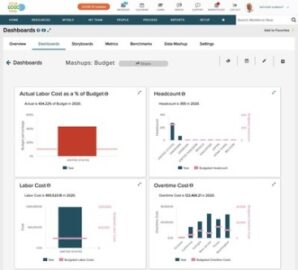Gross Margin vs Profit Margin: What’s the Difference?

For example, they can increase advertising to reach more customers, or they can simply increase the costs of their products. However, these strategies could ultimately backfire and result in even lower contribution margins. The contribution margin shows how much additional revenue is generated by making each additional unit product after the company has reached the breakeven point. In other words, it measures how much money each additional sale “contributes” to the company’s total profits. In these kinds of scenarios, electricity will not be considered in the contribution margin formula as it represents a fixed cost. However, if the electricity cost increases in proportion to consumption, it will be considered a variable cost.
- Net income is often referred to as the bottom line for a company or the net profit.
- Over the course of a year, the restaurant sells $1 million worth of food—that’s its total revenue.
- Contribution margin (sales revenue minus variable costs) is used to evaluate, add and remove products from a company’s product line and make pricing and sales decisions.
- As a percentage, the company’s gross profit margin is 25%, or ($2 million – $1.5 million) / $2 million.
- This is not as straightforward as it sounds, because it’s not always clear which costs fall into each category.
This number represents the entire amount of cash you earned from sales before any expenses are subtracted. To calculate COGS, use your first inventory, add any purchases and other costs, and then minus the last inventory. Which will tell you the entire cost of the products that your company has sold over the duration of the year.
What does gross profit margin tell you?
You can show the contribution margin ratio as CM relative to sales revenue. And you can also compute the variable expense ratio, which is the percentage of variable expenses divided by sales. At the product level In a manufacturing company, variable costs change, depending on the volume of production.
Privia Health Reports Second Quarter 2023 Financial Results – GlobeNewswire
Privia Health Reports Second Quarter 2023 Financial Results.
Posted: Thu, 03 Aug 2023 10:30:00 GMT [source]
Gross margin is shown on the income statement as revenues minus cost of goods sold (COGS), which includes both variable and allocated fixed overhead costs. Often, a company’s cost of goods sold will be comprised of variable costs and fixed costs. Variable costs are only expenses incurred in proportion of manufacturing; for example, manufacturing one additional unit will result in a little bit of materials expense, labor expense, and overhead expenses. The contribution margin is the revenue that’s left after removing variable expenses. The contribution margin determines the leftover money for fixed expenses and net within your account. Moreover, it calculates the profitability of individual products that the corporation sells.
Finding a Product’s Contribution Margin
Additionally, the assessment of the CM can help determine optimal pricing by assessing the impact each change would have on revenue and profitability levels. Variable costs tend to represent expenses such as materials, shipping, and marketing, Companies can reduce these costs by identifying alternatives, such as using cheaper materials or alternative shipping providers. The Balance does not provide tax, investment, or financial services and advice. The information is presented without consideration of the investment objectives, risk tolerance, or financial circumstances of any specific investor and might not be suitable for all investors.
Investors examine contribution margins to determine if a company is using its revenue effectively. A high contribution margin indicates that a company tends to bring in more money than it spends. We have deducted all the variable costs; these costs are related to production and non-production as well. Net profit margin or net margin is the percentage of net income generated from a company’s revenue. Net income is often called the bottom line for a company or the net profit.
Is the contribution margin always higher than the gross margin?
For gross margin, the higher the percentage, the more financial value-add is produced on each dollar of sales made by the company. On the other hand, if a company’s gross margin is falling, it may look to find ways to cut labor costs, lower costs on acquiring materials or even increase prices. A business has a negative contribution margin when variable expenses are more than net sales revenue. If the contribution margin for a product is negative, management should make a decision to discontinue a product or keep selling the product for strategic reasons. A good contribution margin is one that will cover both variable and fixed costs, to at least reach the breakeven point.
However, in economic turmoil, management would emphasize retaining the top line and pushing high margin products to keep the bottom line intact. In a severe recession, the management might work on volume growth, and the margin has to maintain through different cost-cutting techniques. It is required to detect the material cost required to manufacture a product. Manufacturing expenses include direct costs like Raw material costing, cost of packaging, and wages. Ideally, a contribution margin ratio should be as close to 100% as possible. The higher that number, the more money you have to cover the business’s expenses.
Products
Net profit includes gross profit (revenue minus cost of goods) while also subtracting operating expenses and all other expenses, such as interest paid on debt and taxes. The contribution margin is the foundation for break-even analysis used in the overall cost and sales price planning for products. Once you know the company’s gross profit, you can divide it by the total revenue to find the gross margin. Because the gross margin is expressed as a percentage, we find that the fast-food operation has a gross margin of 50%. A disadvantage of gross margin calculations is that they do not take into account other important costs, such as administration and personnel expenses, that could affect profitability.
- It helps understand if business operations are economically viable or there is a need to improve gaps in the production/purchase.
- The primary difference is fixed overhead is included in cost of goods sold, while fixed overhead is not considered in the calculation for contribution margin.
- By excluding all fixed costs, the content of the cost of goods sold figure now changes to direct materials, variable overhead costs, and commission expense.
- As contribution margin will have fewer costs, contribution margin will likely always be higher than gross margin.
Gross profit margin and contribution margin are both analysis tools that look at profits from different perspectives. Gross profit margin is typically used to get a picture of how the business is performing. It reveals growth trends and can be used as a benchmark against other businesses in the same industry.
Contribution margin and gross margin FAQ
Calculating the contribution margin for each product is one solution to business and accounting problems arising from not doing enough financial analysis. Calculating your contribution margin helps you find valuable business solutions through decision-support analysis. The profitability of our company likely benefited from the increased contribution margin per product, as the contribution margin per dollar increased from $0.60 to $0.68.
MediaAlpha Announces Second Quarter 2023 Financial Results – Business Wire
MediaAlpha Announces Second Quarter 2023 Financial Results.
Posted: Wed, 02 Aug 2023 20:05:00 GMT [source]
Each ratio can be useful to businesses in different ways, but gross profit percentages consider all direct costs of production, including both variable and fixed expenses. Contribution margin, by contrast, accounts for only variable expenses such as sales commissions and marketing. Calculating contribution margin might be more difficult for individual investors because beginners’ guide to financial statement you don’t necessarily have all the information you need. Public income statements don’t always break down the revenue and expenses for each individual product line, nor do they separate the variable expenses of producing goods or services from the fixed expenses. Relying on the cost of goods sold isn’t enough, because that figure can include fixed expenses.
Contribution Margin Vs Gross Profit Margin: Comparison Guide
After deducting the variable expenses required for the product and variable period expenses, we calculate the contribution margin. We obtain the profit after meeting these variable expenses and determine the percentage of the contribution profit in terms of sales. Profit margin is the amount of revenue that remains after the direct production costs are subtracted. Contribution margin is a measure of the profitability of each individual product that a business sells. Where C is the contribution margin, R is the total revenue, and V represents variable costs.

Hence, if the business is able to control it, things can be very different and profitable. Here, we are calculating the CM on a per-unit basis, but the same values would be obtained if we had used the total figures instead. All else being equal, the greater the CM of each product, the more profitable the company is going to be, with more cash available to meet other expenses.
The gross profit ratio is calculated by dividing gross profit margin by total sales. A product’s contribution margin will largely depend on the product, industry, company structure, and competition. Though the best possible contribution margin is 100% (there are no variable costs), this may mean a company is highly levered and is locked into many fixed contracts. A good contribution margin is positive as this means a company is able to use proceeds from sales to cover fixed costs. While these two profit measurements are very similar, the first difference is that gross profit margin may be a total profit metric, while contribution margin may be a per item metric. Businesses calculate their contribution margin as a total contribution margin or per-unit amount for products.
Both ratios are expressed in percentage terms but have distinct differences between them. Similarly, companies with a high contribution margin can cover the value of manufacturing the products and still leave a margin of profit. But contribution margin should be compared across because it largely depends on the sort of industry as some industries may have more fixed costs to hide than the others. The variable costs to produce the baseball include direct raw materials, direct labor, and other direct production costs that vary with volume. The gross profit margin is the percentage of the company’s revenue that exceeds its cost of goods sold. It measures the ability of a company to generate revenue from the costs involved in production.
